What the Wives of 14 Actors Who’ve Broken Millions of Women’s Hearts Look Like

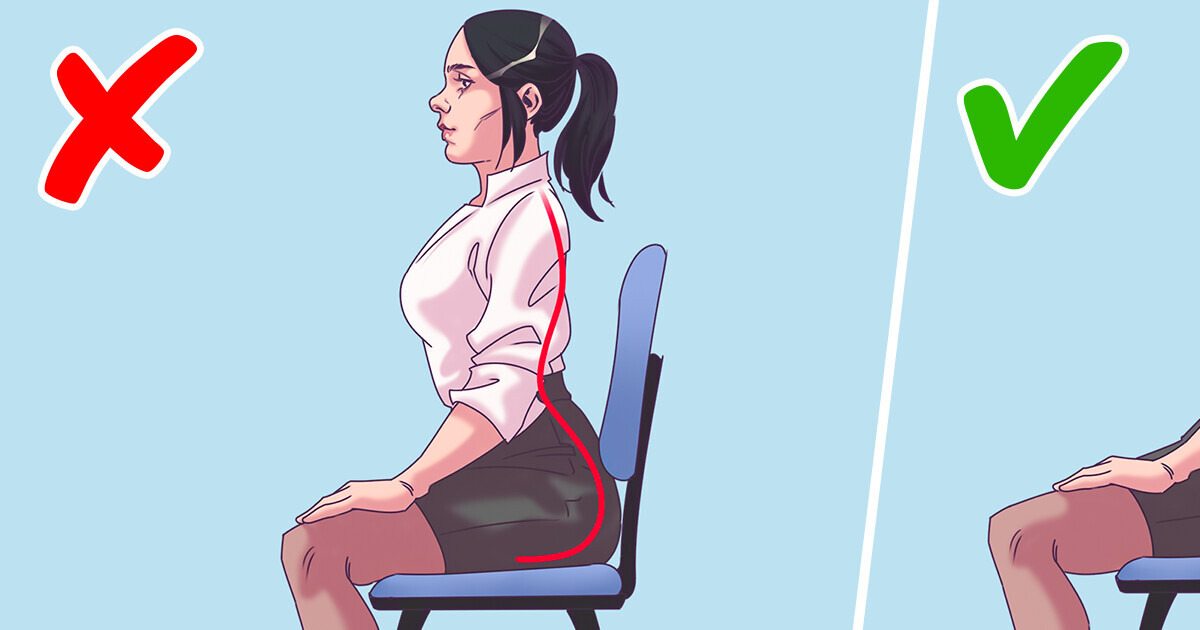
Let’s be honest, no one goes into their 9-to-5 hoping for back pain, stiff legs, or the kind of slouched posture that makes you feel like a question mark by the end of the day. But somehow, between back-to-back meetings and endless emails, we all end up sitting for what feels like an eternity.
A few minutes of movement every hour can transform your workday and your body. And trust us, it doesn’t take much—no gym membership or special equipment required. Just a desk, a chair, and a little commitment to your health. So, if you’ve ever found yourself asking, "Can I really exercise while sitting at my desk?"—the answer is yes, you can, and it’s easier than you think.
Here are 8 effective exercises that’ll help you stay active without ever leaving your workspace.
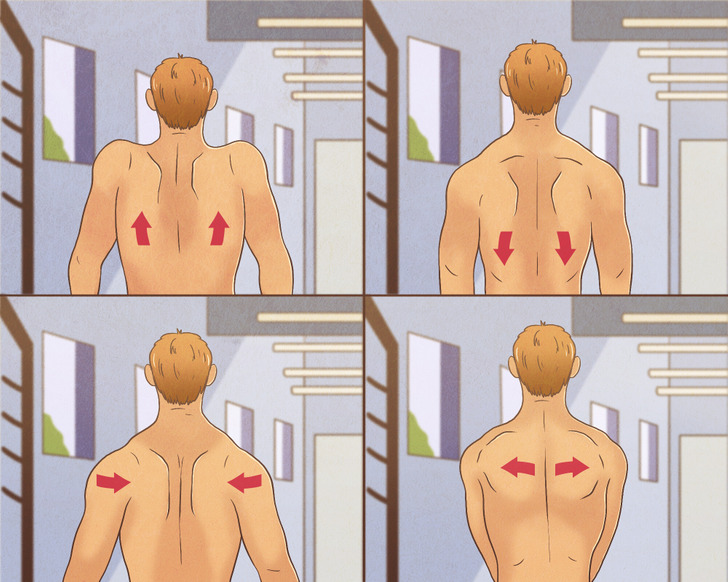
Sit up straight with your shoulders relaxed. Slowly pull your shoulder blades back and down, as if trying to squeeze them together. Hold the position for a moment, then slowly release.
This exercise strengthens the muscles around the scapulae, improving posture and reducing upper back stiffness. It helps counteract the effects of sitting for long periods by engaging and strengthening the muscles that support your spine.
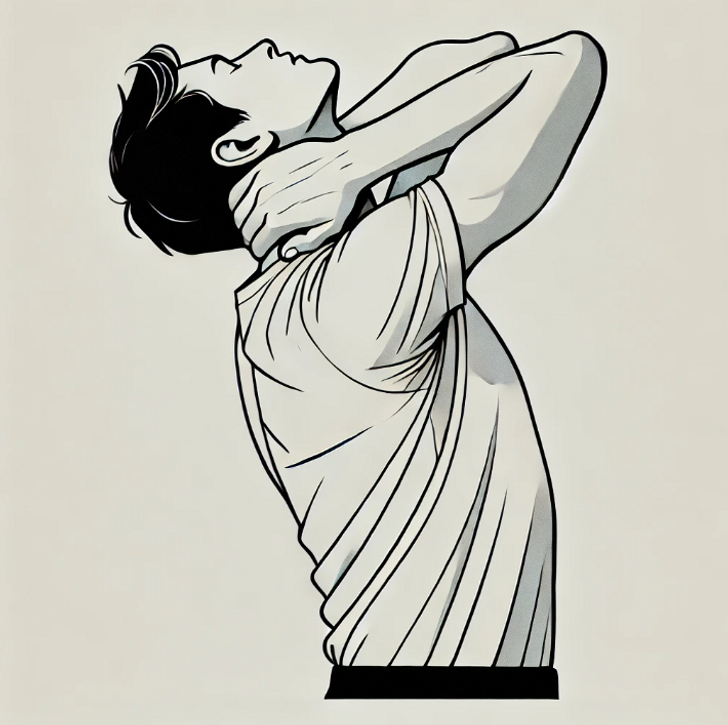
To alleviate neck and shoulder tension, perform the following side tilt stretch.
This simple stretch can help reduce stiffness from prolonged sitting and enhance neck.
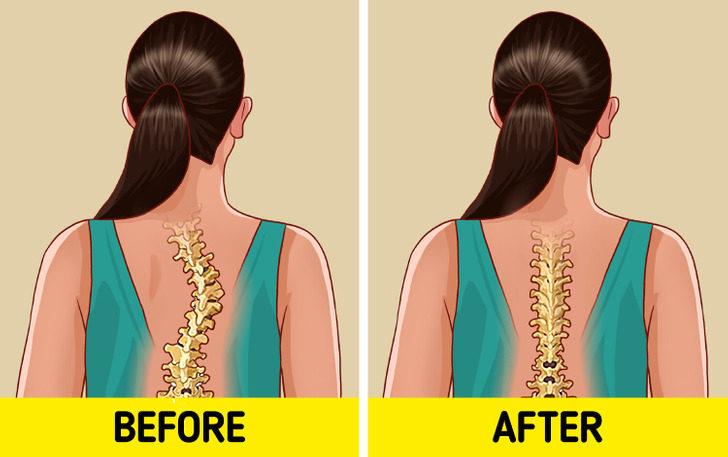
Prolonged sitting with poor posture can exacerbate back pain associated with scoliosis and may even contribute to the progression of the spinal curve. To mitigate these effects, it’s important to maintain proper desk ergonomics and incorporate regular stretching into your routine. For instance, the Thoracic Extension at Desk stretch can be beneficial.
Incorporating such stretches and maintaining awareness of your posture can help alleviate discomfort and prevent further curvature progression.
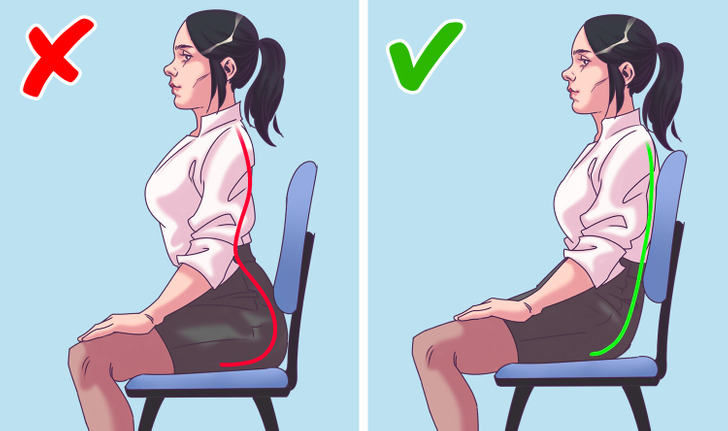
Instead of pulling your shoulders back or keeping your back flat against the chair, experts recommend aligning your back with the chair’s backrest. Avoid leaning forward, especially when feeling fatigued after extended periods of sitting.
This helps maintain proper posture and reduces strain on your spine.
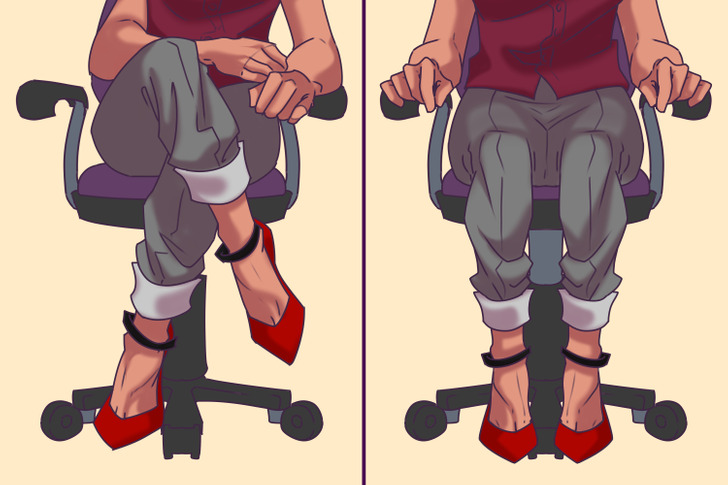
Crossing your legs for long periods can lead to poor posture and circulation issues. Instead, try these exercises whenever you feel the urge to cross your legs.
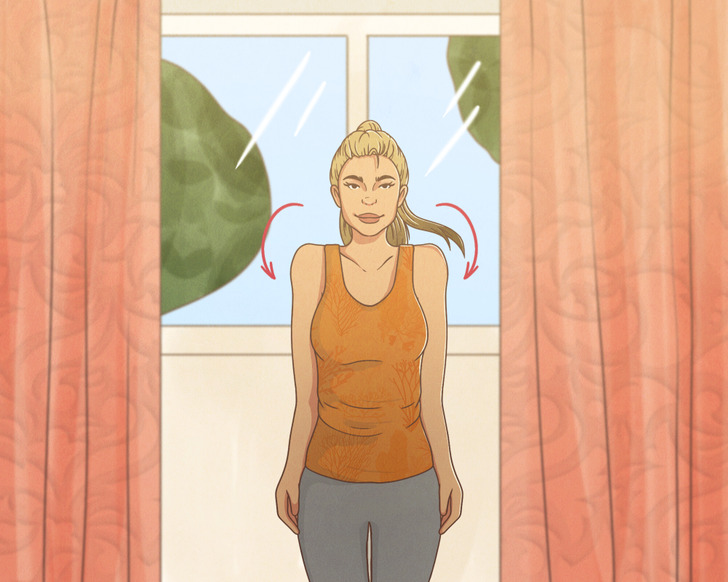
This simple yet effective exercise is a staple in most routines and can be done either standing or sitting. Simply roll your shoulders in circular motions—first forward, then backward—to release built-up tension in your shoulders and neck.
It’s an ideal exercise for those who spend long hours at a computer or perform office-related tasks.
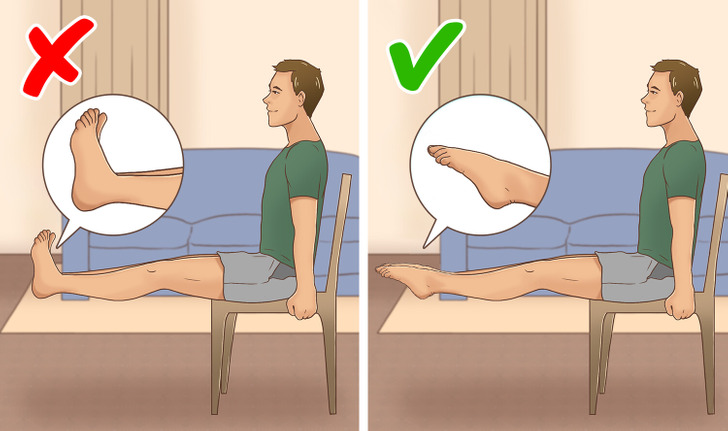
This quick and easy exercise can be done right from your office chair in just a few seconds—so there’s no reason to skip it! Simply extend your legs in front of you and move your feet back and forth, keeping them aligned without shifting to the sides.
This helps relieve ankle tension and, over time, can improve your walking posture and balance.
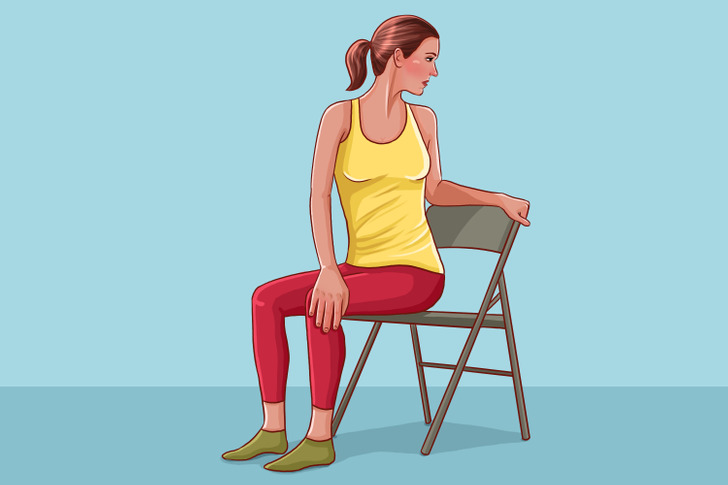
The seated lower back rotational stretch is a great way to ease pain, even while sitting in your office chair. Keep your feet flat on the floor and maintain a tall spine. Rotate your torso to the right, keeping your hips square. Place your left hand on your right knee to support the stretch while ensuring your shoulders stay parallel.
Hold for 10 seconds, then repeat the stretch on the left side.
Sitting all day at work doesn’t have to lead to pain and stiffness. By incorporating simple and effective desk exercises into your routine, you can improve your posture, strengthen key muscle groups, and reduce the risks associated with a sedentary lifestyle. Whether it’s stretching, strengthening, or taking movement breaks, every little bit helps.
So, take a few minutes each hour to stand, stretch, or move your body. Your health and productivity will thank you!











